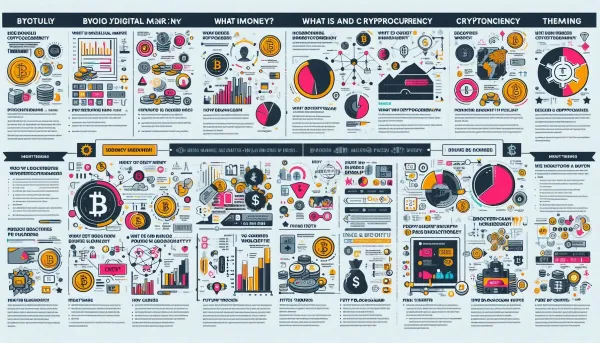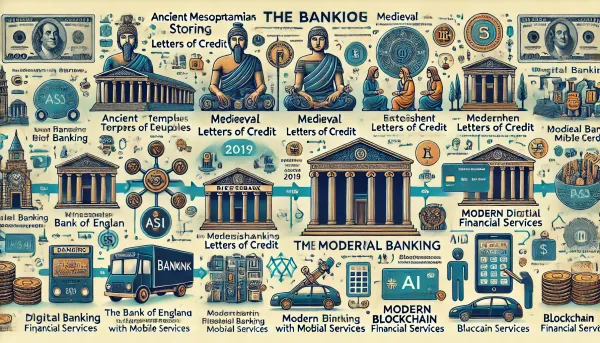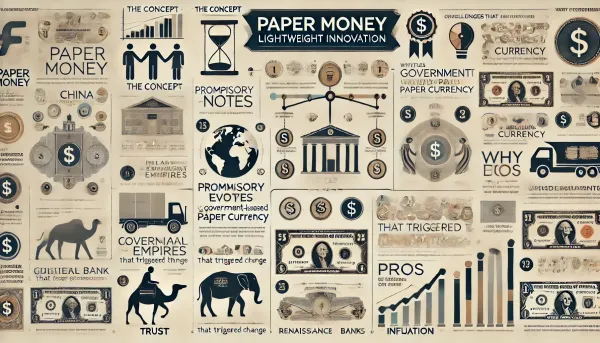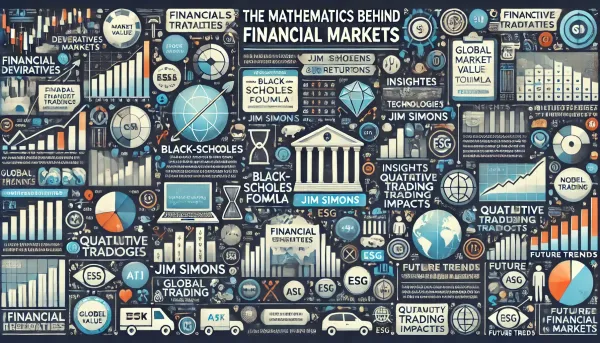Fiat Money: The Currency Built on Trust
Fiat money, currencies with no intrinsic value, rely on trust and government decree. From the gold standard to today’s digital currencies, the evolution of money shows how belief in institutions shapes economies. Learn about the role of central banks, inflation, and the future of digital currencies.

In today’s world of digital transactions and cashless payments, money has become an abstract concept—little more than numbers on a screen. But have you ever wondered what gives modern money its value? Unlike the gold and silver coins of the past, most currencies today, like the US dollar, euro, and yen, are fiat money—essentially pieces of paper or digital entries backed by nothing but collective trust.
At Veitopia, we emphasize that understanding the fundamentals of the financial system is essential for making informed economic decisions. By exploring the origins, psychology, and future of fiat money, we aim to empower individuals to navigate today’s complex economic landscape with confidence.
Table of Contents
- The Foundation of Modern Economies
- History of Money
- The Role of Trust
- Functions of Central Banks
- Advantages and Risks of Fiat Money
- Digital Future of Money
- Global Influence of Fiat Currencies
- Importance of Financial Literacy
- Conclusion: Future of Money
The Foundation of Modern Economies
Fiat money derives its value not from physical commodities but from government decree and social consensus. It is legally recognized as “legal tender,” meaning people are required to accept it for goods, services, and debts.
✅ Why We Trust Fiat Money:
- Government laws mandate its use.
- People collectively accept and trust it as a medium of exchange.
- Stability is maintained by central banks and monetary authorities.
💡 Historical Perspective:
In ancient societies, people used commodity money—items like cattle, salt, or shells that had inherent value. Over time, metal coins made from gold and silver became the preferred medium of exchange due to their durability and divisibility.
However, as economies grew, transporting and safeguarding large quantities of precious metals became impractical, leading to the advent of representative money—banknotes that could be exchanged for a fixed amount of gold or silver.
Transition to Fiat Money
🔹 The Gold Standard Era:
Under the gold standard, currencies were directly convertible to gold. While this system provided stability, it also restricted governments’ ability to respond to economic crises.
🔹 Bretton Woods System (1944–1971):
Post-World War II, the Bretton Woods Agreement established a modified gold standard where the US dollar was pegged to gold at $35 per ounce, and other currencies were pegged to the dollar.
🔹 The End of the Gold Standard (1971):
In 1971, President Richard Nixon ended the convertibility of the US dollar to gold, effectively creating a pure fiat system where currency value was determined by public confidence and government backing alone.
📖 Recommended Reading:
- The Ascent of Money: A Financial History of the World by Niall Ferguson
- Money: The Unauthorized Biography by Felix Martin
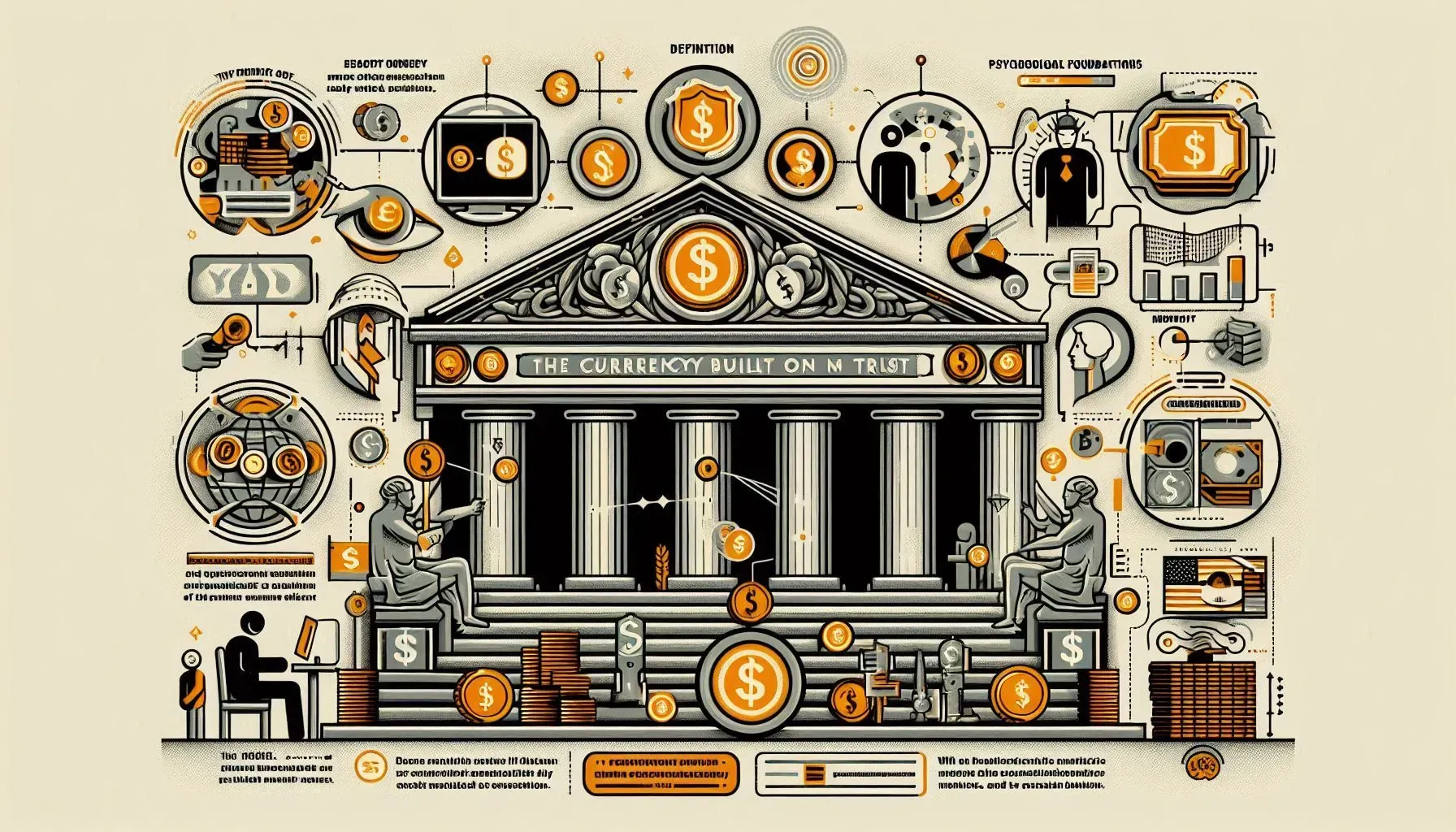
The Psychological Contract: Why Fiat Money Works
The value of fiat money hinges on a psychological contract between the public and the issuing authority. Every time you accept payment in dollars or euros, you’re expressing faith in the stability of institutions and economic policies.
💡 Yuval Noah Harari, in Sapiens: A Brief History of Humankind, describes money as:
“The most universal and most efficient system of mutual trust ever devised.”
Real-World Examples of Trust in Fiat Systems
- The US Dollar as a Global Reserve Currency:
The US dollar’s dominance stems not only from America’s economic strength but also from the world’s trust in US institutions, policies, and stability. - Hyperinflation in Venezuela:
When trust in the Venezuelan government eroded due to mismanagement and corruption, the Bolívar lost 99% of its value, causing catastrophic inflation. - The Eurozone Crisis (2010–2015):
The sovereign debt crisis in Greece and other Eurozone countries led to widespread doubts about the stability of the euro, threatening the European financial system.
The Role of Central Banks in Fiat Systems
🏦 Central Banks as Guardians of Trust:
Institutions like the Federal Reserve (Fed), European Central Bank (ECB), and Bank of Japan (BOJ) play a crucial role in maintaining stability in fiat money systems.
How Central Banks Influence Economies
- Interest Rate Adjustments
📉 Lower interest rates encourage borrowing and spending.
📈 Higher interest rates curb inflation and slow down the economy. - Open Market Operations (OMO)
Central banks buy and sell government securities to regulate money supply and liquidity. - Reserve Requirements
By adjusting the amount of reserves that banks must hold, central banks can influence how much money circulates in the economy. - Quantitative Easing (QE)
During crises, central banks may purchase financial assets to inject liquidity into the economy.
📄 Further Reading:
The Risks and Challenges of Fiat Money
While fiat money offers flexibility, it also introduces significant risks:
1. Inflation and Hyperinflation
📈 Inflation erodes purchasing power over time.
💣 Hyperinflation occurs when prices skyrocket, rendering money worthless.
📊 Examples of Hyperinflation:
- Zimbabwe (2007–2009): Inflation peaked at 89.7 sextillion percent annually.
- Weimar Germany (1923): Hyperinflation led to people carrying wheelbarrows of money to buy bread.
2. Deflation and Economic Contraction
📉 Deflation reduces prices but can lead to economic stagnation.
📉 Consumers delay purchases, causing a downward economic spiral.
🔍 Case Study: Japan’s Deflation Crisis
Japan has struggled with deflation since the 1990s, despite aggressive central bank interventions.
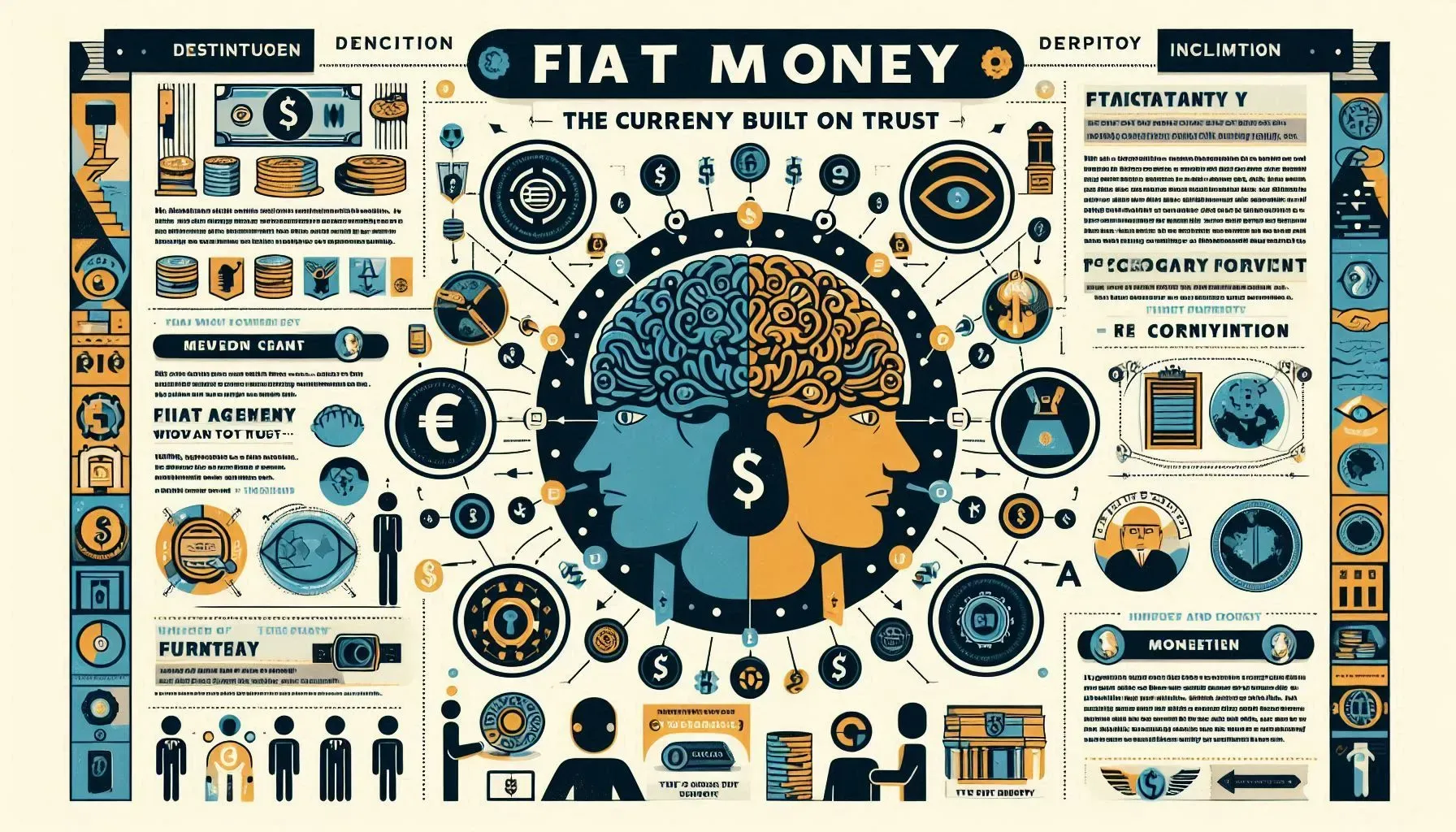
Alternative Perspectives: Modern Monetary Theory (MMT) and Hayek’s Ideas
Modern Monetary Theory (MMT)
💡 MMT argues that:
- Monetarily sovereign governments can print money without fiscal constraints.
- Governments can use fiscal policy to achieve full employment and price stability.
📄 Recommended Reading:
- “The Deficit Myth” by Stephanie Kelton
Friedrich Hayek’s Denationalization of Money
💡 Hayek advocated for:
- Currency competition where private institutions issue competing currencies.
- The belief that market competition would produce stable and trustworthy currencies.
📖 Recommended Reading:
- “The Denationalization of Money” by Friedrich Hayek
The Rise of Cryptocurrencies and CBDCs
The digital revolution has introduced cryptocurrencies and central bank digital currencies (CBDCs) as potential challengers to fiat money systems.
1. Cryptocurrencies as Alternatives
🚀 Bitcoin and Ethereum offer decentralized alternatives to fiat currencies.
⚡️ Bitcoin’s fixed supply (21 million coins) positions it as a hedge against inflation.
📄 Further Reading:
- The Bitcoin Standard: The Decentralized Alternative to Central Banking by Saifedean Ammous
2. Central Bank Digital Currencies (CBDCs)
🔹 CBDCs are digital versions of fiat currencies issued by central banks.
🔹 90% of central banks are actively researching or developing CBDCs, according to a 2023 survey by the Bank for International Settlements (BIS) (Source).
💡 Potential Impacts of CBDCs:
- Increased financial inclusion in underserved regions.
- Real-time monetary policy adjustments for economic stability.
Global Implications of Fiat Currencies
The international monetary system is dominated by fiat currencies, creating complex global dynamics.
The Dollar’s “Exorbitant Privilege”
🌎 The US dollar’s role as the world’s reserve currency gives the United States immense economic power.
🔹 Benefits:
- Ability to run persistent trade deficits.
- Global demand for US assets, including Treasury bonds.
🔹 Risks:
- Dollar liquidity shortages can trigger global financial crises.
- Emerging economies face vulnerability due to dollar-denominated debt.
📄 Further Reading:
- "The Rise and Fall of Fiat Money" by Dominick Salvatore, Journal of Money, Credit, and Banking
Financial Literacy in a Fiat World
In a fiat money system, financial literacy becomes essential for managing wealth effectively.
💡 Key Concepts to Understand:
- Inflation, deflation, and purchasing power.
- Interest rates and their impact on savings and loans.
- The role of central banks in monetary policy.
📚 Veitopia’s Commitment to Financial Literacy:
We provide accessible resources to empower individuals with the knowledge to navigate complex financial systems.
Looking Forward: The Future of Money
As we move toward a digital-first world, the future of money will likely involve:
✅ Hybrid monetary systems combining fiat, cryptocurrencies, and CBDCs.
✅ New trust mechanisms shifting from physical to digital frameworks.
✅ Potential shifts in global reserve currencies driven by geopolitical changes.
💡 Whether we continue with fiat systems or transition to something entirely new, trust will remain the cornerstone of any successful monetary system.
Frequently Asked Questions About Fiat Money
What is fiat money?
Fiat money is a currency that derives its value from government decree and public trust, not from intrinsic value.
When did the US dollar become a fiat currency?
The US dollar became a pure fiat currency in 1971 when President Nixon ended its convertibility to gold.
What gives fiat money value?
Fiat money is valuable because of legal tender laws, public confidence, and collective agreement.
Can fiat money fail?
Yes, fiat money can fail when public confidence collapses or when governments mismanage monetary policies.
How does fiat money differ from cryptocurrency?
Fiat money is issued and managed by central authorities, while cryptocurrencies operate on decentralized networks.
Additional Resources and Further Reading
📚 Books:
- “The End of Money and the Future of Civilization” by Thomas Greco
- “Narrative Economics: How Stories Go Viral and Drive Major Economic Events” by Robert J. Shiller
🎥 Documentaries:
- “Money as Debt” (2006) – Directed by Paul Grignon
- “The Ascent of Money” (2008) – Based on Niall Ferguson’s book
🎧 Podcasts:
Final Thoughts
At Veitopia, we believe that understanding the intricate relationship between money, trust, and governance is the key to financial empowerment. Whether you’re a student, entrepreneur, or simply curious about how money works, we invite you to explore the fascinating world of fiat currencies and beyond.
🌐 Join us at Veitopia for The evolution of money and finance!


